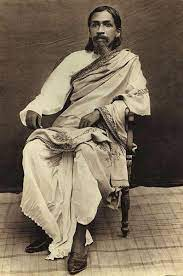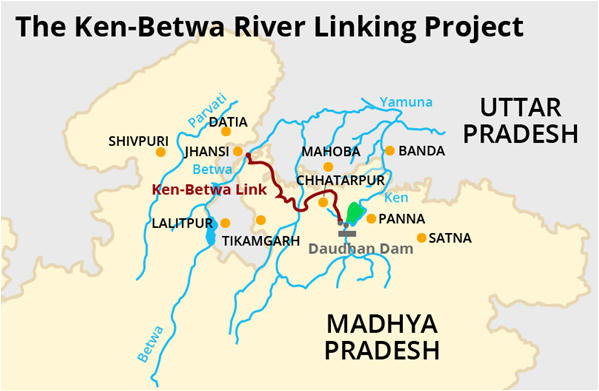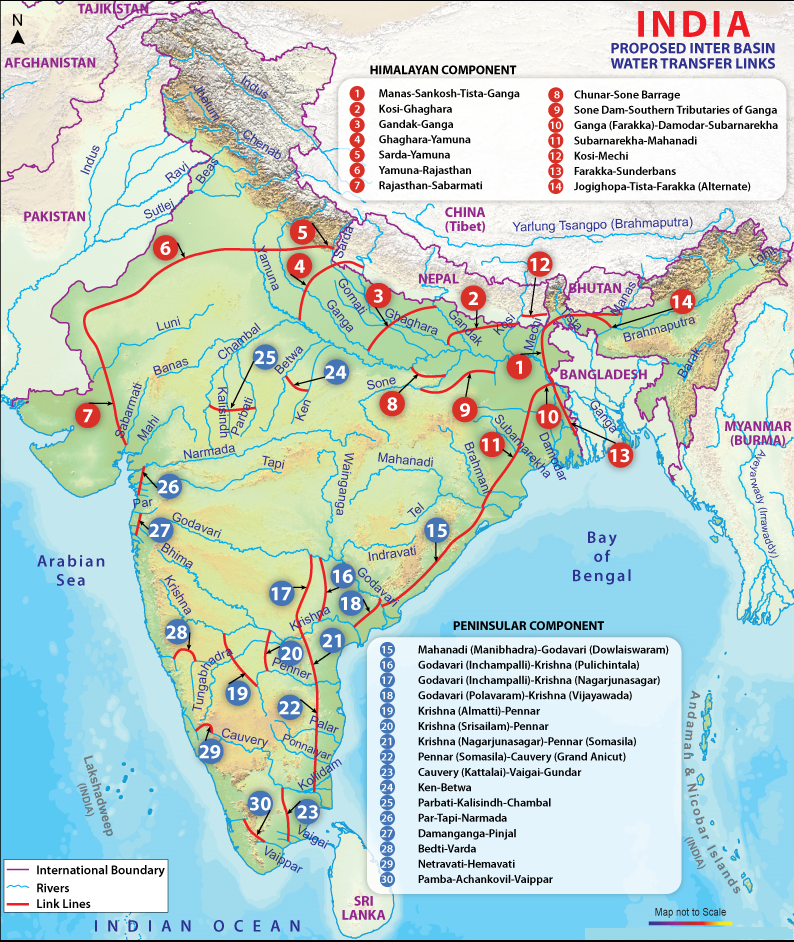CONTENTS
- Sri Aurobindo
- Ken-Betwa Link Project
Sri Aurobindo
Focus: GS I- Modern History
Why in News?
Recently, the Indian Prime Minister has participated in a programme commemorating Sri Aurobindo’s 150th birth anniversary in Puducherry, under the aegis of Azadi ka Amrit Mahotsav.
- The PM has released a commemorative coin and postal stamp in honor of Sri Aurobindo.
About Sri Aurobindo

- Born Aurobindo Ghose in Calcutta on 15 August 1872, Sri Aurobindo was drawn to the Indian freedom movement as a revolutionary leader.
- His father Krishna Dhun Ghose was a surgeon in Rangpur, Bengal and had sought to provide his five children English education considering British culture to be superior to Indian culture.
- In 1879, the whole family moved to England as Krishna Dhun Ghose wanted his sons to pursue the Indian Civil Service (ICS). There, Aurobindo was taught History, French, Latin, Arithmetic and Geography.
- He passed the ICS examination securing the 11th rank out of 250 candidates. He joined King’s College for the training but had himself disqualified for an exam by arriving deliberately late as he had no interest in the ICS.
- He returned to India and secured employment in the Baroda State Service with the help of an acquaintance.
- He developed a kind of Yoga called Integral Yoga. He believed that human beings can evolve further into something truly divine.
- He inspired scores of people both from India and abroad.
- Sri Aurobindo passed away on 5 December 1950 in Pondicherry aged 78.
Indian Revolutionary Movement:
- From 1902 to 1910 he partook in the struggle to free India from the British. As a result of his political activities, he was imprisoned in 1908 (Alipore Bomb case).
- Two years later he fled British India and found refuge in the French colony of Pondichéry (Puducherry), where he devoted himself for the rest of his life to the development of his “integral” yoga with an aim of a fulfilled and spiritually transformed life on earth.
Some of Aurobindo’s many literary works:
- An English newspaper called Bande Mataram (in 1905).
- Bases of Yoga
- Bhagavad Gita and Its Message
- The Future Evolution of Man
- Rebirth and Karma
- Savitri: A Legend and a Symbol
- Hour of God
Ken-Betwa Link Project
Focus: GS III- Environment
Why in News?
Recently, Union Minister for Jal Shakti said Ken Betwa Link Project Would Be A Boon For Bundelkhand Region & Is Planned To Be Completed In 8 Years
Interlinking of Rivers
- In 1858, Arthur Cotton (British general and irrigation Engineer) came up with even more ambitious proposals such as connecting all major rivers of India, and interlinking of canals and rivers. He suggested drought-relief measures for Odisha.
- The National River Linking Project (NRLP) formally known as the National Perspective Plan, envisages the transfer of water from water ‘surplus’ basins where there is flooding, to water ‘deficit’ basins where there is drought/scarcity, through inter-basin water transfer projects.
- The interlinking of river project is a Civil Engineering project, which aims to connect Indian rivers through reservoirs and canals.
- The farmers will not have to depend on the monsoon for cultivation and also the excess or lack of water can be overcome during flood or drought.
- Since the 1980s, the interlinking project has been managed by India’s National Water Development Agency (NWDA) under the Ministry of Water Resources.
- It has been split into three parts as follows:
- A northern Himalayan river interlink component.
- A southern peninsular component.
- An Intra-State river linking component.
As of now, six ILR projects have been under examination of the authorities:
- Ken-Betwa,
- Damanganga- Pinjal,
- Par-Tapi-Narmada,
- Manas-Sankosh-Teesta-Ganga,
- Mahanadi-Godavari and
- Godavari-Cauvery (Grand Anicut)
- With regard to the peninsular rivers, the Centre has chosen to focus on the Godavari-Cauvery link.
What is the Ken-Betwa Link Project?


- The Ken-Betwa Link Project is the first project under the National Perspective Plan for interlinking of rivers.
- KBRIL is a river-interlinking project that aims to transfer surplus water from the Ken river in Madhya Pradesh to Betwa in Uttar Pradesh to irrigate the drought-prone Bundelkhand region.
- Both Ken and Betwa are the tributaries of the Yamuna.
- The Ken-Betwa Link Canal will be 221 km long, including a 2-km long tunnel.
A Special Purpose Vehicle (SPV) for the project
- According to the statement, a Special Purpose Vehicle (SPV) called Ken-Betwa Link Project Authority (KBLPA) will be set up to implement the project.
- In fact, the Centre has set in motion the process of creation of National Interlinking of Rivers Authority (NIRA), an independent autonomous body for planning, investigation, financing and implementation of the interlinking of river (ILR) projects in the country.
- The NIRA will have powers to set up SPV for individual link projects.
Which regions will benefit from the Ken-Betwa Link Project?
- The project lies in Bundelkhand, a drought-prone region, which spreads across 13 districts of Uttar Pradesh and Madhya Pradesh.
- According to the Jal Shakti Ministry, the project will be of immense benefit to the water-starved region, especially the districts of Panna, Tikamgarh, Chhatarpur, Sagar, Damoh, Datia, Vidisha, Shivpuri and Raisen of Madhya Pradesh, and Banda, Mahoba, Jhansi and Lalitpur of Uttar Pradesh.
- “It will pave the way for more interlinking of river projects to ensure that scarcity of water do inhibitor for development in the country,” the Ministry said in a statement.





